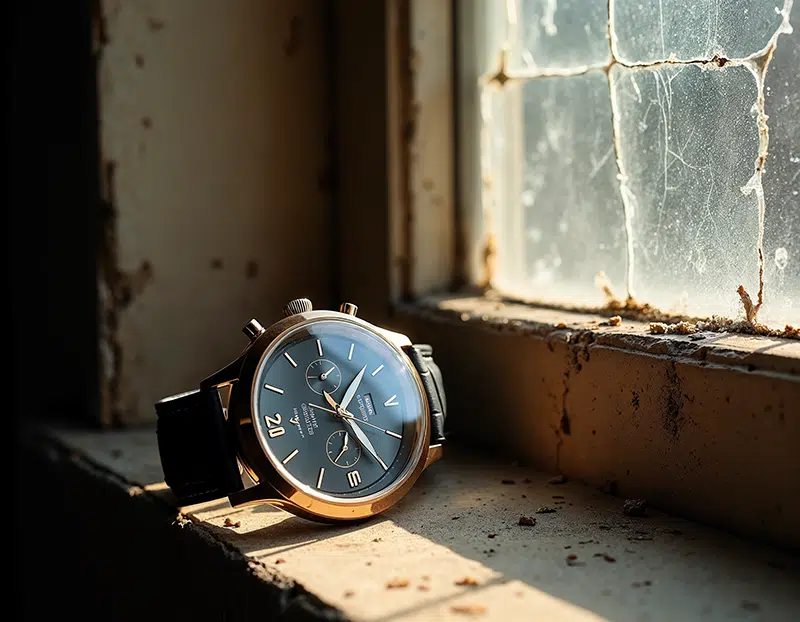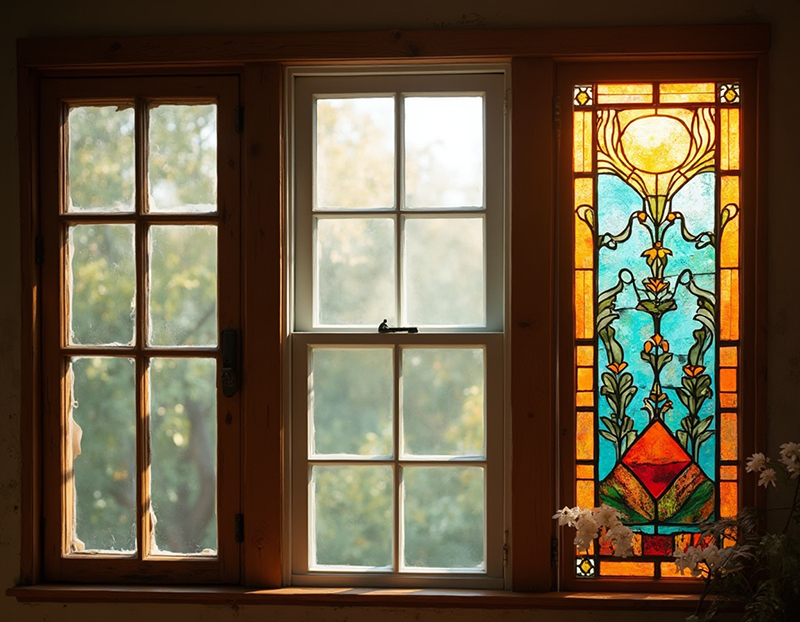Replacing your windows is an investment that pays off in comfort, energy savings, and the overall value of your home.
While every home is different, most existing windows can be replaced with newer, more energy-efficient windows every 15 to 20 years. But there are a few factors that may require homeowners to replace their windows more frequently. Understanding how to assess the condition of your windows, recognize the signs of aging, and choose the best replacement options will help you make the best window decisions for your home.
When should you replace your windows?
Before diving into the age of your windows, it’s essential to know how to assess their current condition. Identifying the signs of wear and tear, such as drafty windows, can help you determine if it’s time for a replacement. Drafty windows can lead to higher energy bills due to air leakage, which increases heating and cooling costs.
Ultimately, the frequency with which home windows need to be replaced depends on a number of factors. By keeping an eye on the condition of existing windows, homeowners can make sure that they are replaced before they become a significant source of energy loss and money.
Signs Your Windows May Need to Be Replaced
| Sign | Description | Action Needed |
|---|---|---|
| Drafts and Poor Insulation | Cold drafts indicate worn seals, leading to air leakage and higher energy bills. | Replace windows to improve insulation and reduce energy costs. |
| Condensation Between Panes | Fogging or condensation between panes signals seal failure, reducing insulation. | Replace windows to prevent moisture issues and restore insulation. |
| Difficulty Operating Windows | Hard-to-open, close, or lock windows suggest warping or worn mechanisms. | Consider replacing to improve functionality and security. |
| Visible Damage or Decay | Cracks, rotting wood, or warping frames compromise appearance and performance. | Replace damaged windows to enhance efficiency and protect against the elements. |
| Noise Pollution | Older windows may lack noise insulation, leading to increased outside noise intrusion. | Replace with modern, insulated windows to reduce noise pollution and improve comfort. |
1. Drafts and Poor Insulation
One of the most obvious signs that your windows need replacing is if you feel cold air drafts near them; usually, cold drafts are indicators that the seals around the windows have worn out, allowing air to pass through.
Poor insulation not only makes your home less comfortable but also increases your energy bills as your heating or cooling system works harder to maintain the desired temperature.
2. Condensation Between Panes
If you notice condensation or fogging between the panes of your double- or triple-glazed windows, that’s another sign that the seal has failed. Failed seals reduce the window’s insulating capabilities and can lead to moisture problems inside your home. Once the seal is compromised, replacing the window is often the best solution.
3. Difficulty Operating the Windows
Windows that are hard to open, close, or lock indicate a potential problem. Over time, windows can warp or the mechanisms can wear out, making them difficult to operate.
If you struggle to open or close your windows, or if the locks no longer function properly, it may be time for a replacement. Double hung windows are a popular option because both sashes move, improving air circulation and making them easier to clean.
4. Visible Damage or Decay
Inspect your windows for visible damage such as cracks in the glass, rotting wood, or warping frames. These issues not only affect the appearance of your windows but also compromise their performance.
Damaged or decaying windows can lead to air and water leaks, making your home less energy-efficient and more vulnerable to the elements. Single pane windows, in particular, have poor insulation and soundproofing qualities, leading to increased energy bills and sound transfer.
5. Noise Pollution
Older windows often lack the noise-reducing capabilities of modern, insulated windows. If you notice an increase in outside noise, your windows might not be providing adequate sound insulation. Replacing them with newer, more efficient models can significantly reduce noise pollution and improve your home’s comfort.

When to Replace Windows By Age
Should I Replace My 20-Year-Old Windows?
At the 20-year mark, window replacement often becomes necessary as windows start to lose their effectiveness, leading to higher energy costs and potential operational issues. Replacement is usually the best option to restore energy efficiency and comfort to your home.
As windows age, the materials begin to degrade, and their ability to insulate your home diminishes. If your 20-year-old windows are showing signs of wear, such as difficulty opening and closing or noticeable drafts, it’s time to replace them. New windows can provide better insulation, lower energy bills, and increase your home’s value.
Should I Replace My 30-Year-Old Windows?
Window replacements are essential for windows that are 30 years old or more, as they have typically surpassed their expected lifespan. If you haven’t already, it’s time to replace them with modern, energy-efficient options to avoid safety risks and improve your home’s overall comfort.
At 30 years, the materials used in your windows are likely brittle and prone to breaking. Replacing them with contemporary windows can significantly boost your home’s energy efficiency, reduce noise pollution, and add value to your property. Don’t wait until problems become severe; replacing your windows now will save you money and hassle in the long run.
| Window Age | Common Issues | Action Needed |
| 5 Years | Minor issues | Maintenance or minor repairs |
| 10 Years | Condensation, wear | Monitor and possibly repair |
| 15 Years | Drafts, higher energy bills | Consider replacement |
| 20 Years | Energy loss, operational issues | Replacement recommended |
| 25 Years | Rot, fogging | Replacement necessary |
| 30 Years | Inefficiency, safety risks | Immediate replacement |

When to Replace Different Types of Windows
Vinyl Windows
Vinyl windows are popular for their durability and low maintenance. They generally last between 20 and 40 years, depending on exposure to the elements. If you notice warping, cracks, or seal failure, it’s a sign that your vinyl windows need to be replaced.
Regular cleaning and inspection can help extend their life, but once you start seeing signs of failure, such as difficulty locking or drafts, it’s best to consider replacing them to maintain your home’s energy efficiency.
Wood Windows
Wood windows offer aesthetic appeal but require more maintenance. With proper care, they can last 30 years or more. If you observe signs of rot or difficulty operating the windows, it may be time for a replacement.
Wood windows are known for their classic look and superior insulation, but they require regular upkeep to prevent issues like rot and warping. Painting and sealing wood windows every few years can extend their life, but eventually, they will need to be replaced.
When the wood begins to deteriorate or no longer holds a seal, replacing them with modern wood or composite windows can improve your home’s energy efficiency and appearance.
Aluminum Windows
Aluminum windows are strong but can corrode over time, particularly in coastal areas. They typically have a lifespan of 20-30 years. When corrosion or drafts become evident, replacement is necessary.
Aluminum windows are susceptible to corrosion, especially in humid or salty environments. Regularly checking for signs of corrosion and making sure that the window frames are properly sealed can delay the need for replacement, but once corrosion sets in, replacing the windows is essential to prevent further damage to your home.
Fiberglass Windows
Fiberglass windows are known for their strength and can last up to 40 years. If you detect fading, cracks, or other signs of deterioration, consider replacing them to maintain your home’s energy efficiency.
Fiberglass windows can last longer than other window types, it’s important to watch for signs of wear, such as fading or cracking. Replacing them when they begin to deteriorate will help keep your home insulated and looking great.
3 Things to Consider When Choosing Your Replacement Windows
When it comes time to replace your windows, choosing the right replacement can make all the difference in energy efficiency, comfort, and aesthetics. We’ve looked at how long each different window type lasts and how to identify the common window problems, but here are five popular replacement window options to consider for your home and why to pick each one.
1. Window Material
Vinyl Windows
Vinyl windows are a cost-effective, low-maintenance option that provides good insulation. They are available in various styles and are resistant to moisture, making them a popular choice for many homeowners. Vinyl windows typically last 20-40 years, depending on the environment and care.
Wood Windows
Wood windows offer natural beauty and excellent insulation. Though they require more maintenance than other types, they can last up to 30 years or more with proper care. Wood windows are ideal for homeowners looking to maintain the traditional look of their home while improving energy efficiency.
Aluminum Windows
Aluminum windows are known for their durability and sleek, modern appearance. They are lightweight and strong but can be prone to condensation and corrosion, especially in humid climates. Aluminum windows typically last 20-30 years and are a good choice for modern or industrial-style homes.
Fiberglass Windows
Fiberglass windows are strong, durable, and offer excellent insulation. They are resistant to warping, making them a low-maintenance option that can last up to 40 years. Fiberglass windows are ideal for homeowners looking for a long-lasting, energy-efficient window.
Composite Windows
Composite windows combine materials like wood and vinyl to offer the benefits of both. They are durable, energy-efficient, and require less maintenance than traditional wood windows. Composite windows can last around 30-40 years and are a good choice for homeowners who want the look of wood with added durability.
| Window Type | Lifespan | Key Features | Ideal For |
| Vinyl Windows | 20-40 years | Low-maintenance, moisture-resistant | Budget-conscious homeowners |
| Wood Windows | 30+ years | Natural beauty, excellent insulation | Traditional homes |
| Aluminum Windows | 20-30 years | Durable, modern appearance | Modern/industrial-style homes |
| Fiberglass Windows | 30-40 years | Strong, energy-efficient, warp-resistant | Long-term, energy-efficient solutions |
| Composite Windows | 30-40 years | Combines wood and vinyl benefits | Homeowners wanting wood aesthetics with durability |
2. High-End Windows
For homeowners looking for top-of-the-line performance and aesthetics, high-end windows offer the best in technology, materials, and design. High-end windows are typically custom-made to fit your home’s specific needs, providing unparalleled insulation, security, and style.
Key Features of High-End Windows:
- Advanced Insulation: High-end windows often feature triple glazing, inert gas fills, and advanced Low-E coatings, offering superior insulation that exceeds standard energy efficiency ratings.
- Custom Designs: These windows are available in custom sizes, shapes, and finishes, allowing homeowners to create a truly unique look that complements their home’s architecture.
- Improved Security: High-end windows may include advanced locking systems and impact-resistant glass, providing additional security against break-ins and extreme weather conditions.
- Superior Durability: Made from premium materials like reinforced fiberglass or aluminum-clad wood, high-end windows are designed to withstand the harshest elements while maintaining their beauty and functionality.
- Increased Home Value: While the initial investment is higher, high-end windows can significantly increase your home’s value, making them a worthwhile long-term investment.
3. Energy-Efficient Windows | Lowering Heating and Cooling Costs
When choosing a replacement window, energy efficiency is a key consideration. Energy-efficient windows help reduce energy bills and keep your home comfortable year-round. Opting for Energy Star certified windows can lead to significant annual savings on energy bills. Look for features like Low-E coatings, double or triple glazing, and gas fills between panes to improve insulation and reduce energy loss.
Types of Energy-Efficient Windows:
- Double-Glazed Windows: Two layers of glass with an inert gas like argon between them for better insulation.
- Triple-Glazed Windows: Three layers of glass for even better insulation, ideal for very cold climates.
- Low-E Coating: A coating that reduces infrared and ultraviolet light penetration while maintaining visible light.
- Gas Fills: Inert gases like argon or krypton used between glass panes to reduce heat transfer.
Ready to Improve Your Home?
If your windows are showing signs of aging or inefficiency, don’t wait until the problems worsen. Replace your old windows with modern, energy-efficient ones to significantly improve your home’s comfort, safety, and value.
Reach out to our expert team today for a free consultation and quote. Let’s find the perfect solution for your window needs and start improving your home together!


